Control Tunneling
Control Tunneling allows bi-directional communications tunnels to be created in a Tesira system. Each Control Tunnel is point-to-point and can be configured as Serial-to-Serial or SSH-to-Serial. Once the Control Tunnels have been created, 3rd-party control products may use them to control connected devices such as displays or Pan-Tilt-Zoom (PTZ) cameras.
The feature is supported on TesiraFORTE, TesiraLUX, SERVER-IO and SERVER devices.
NOTE: Control Tunneling is not supported on the EX-Logic.
Serial-to-Serial Tunnel
The Serial-to-Serial Tunnel allows two serial ports on different Tesira server-class devices (within a Tesira system) to be linked. Once configured, this tunnel behaves like a serial port extender. An example is shown below:
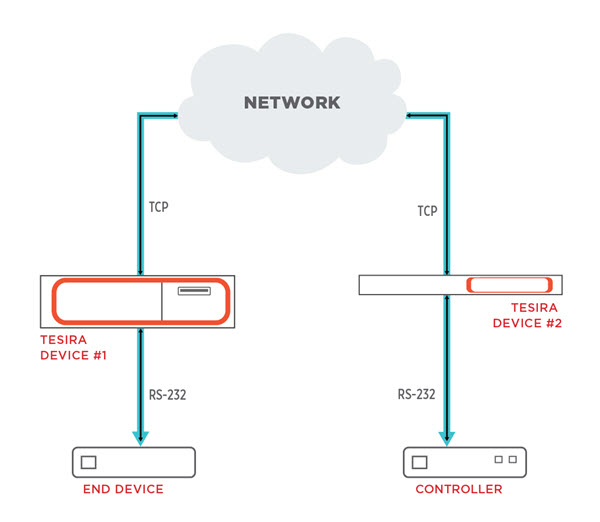
SSH-to-Serial Tunnel
The SSH-to-Serial Tunnel allows a 3rd-party controller to establish an SSH session with a Tesira server-class device (within a Tesira system) and communicate via its serial port. Once configured, the SSH Control Tunnel acts like a serial port extender using SSH. The 3rd party controller acts as a client authenticating with the Tesira device it wants to send serial commands through. An example is shown below:
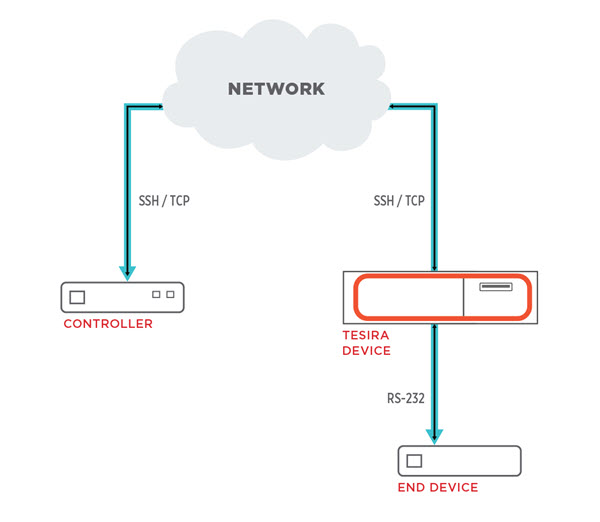
Multiple Tunnels
Larger Tesira systems will have more serial ports available for Control Tunneling. A user may mix and match these Control Tunnel types as needed to accommodate a design. An example of multiple mixed Control Tunnels is shown below:
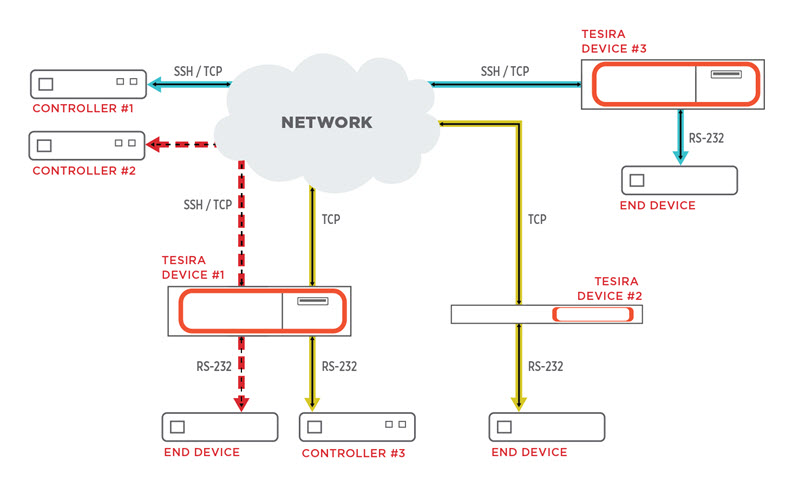
Creating and Editing Control Tunnels
Control Tunnels are created and edited in the Equipment Table in Tesira Software. Select a server-class device from the Equipment Table and click Control Tunneling to show serial port settings in the Device Information tab:
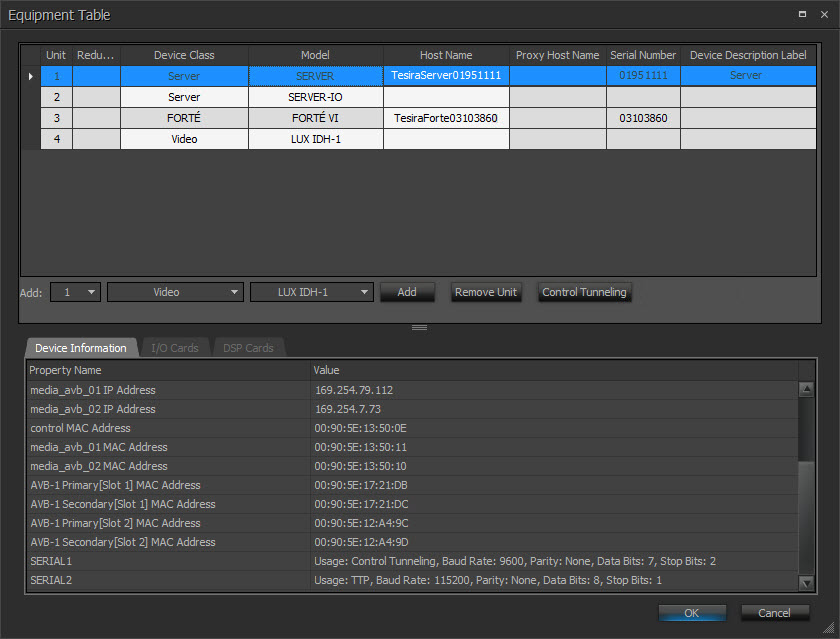
The Control Tunneling Source may be assigned as a serial port of a Tesira server-class device in a Serial-to-Serial tunnel, or as Network (SSH) for a SSH-to-Serial tunnel. The Destination may be assigned to the Tesira serial port nearest the end device being controlled:
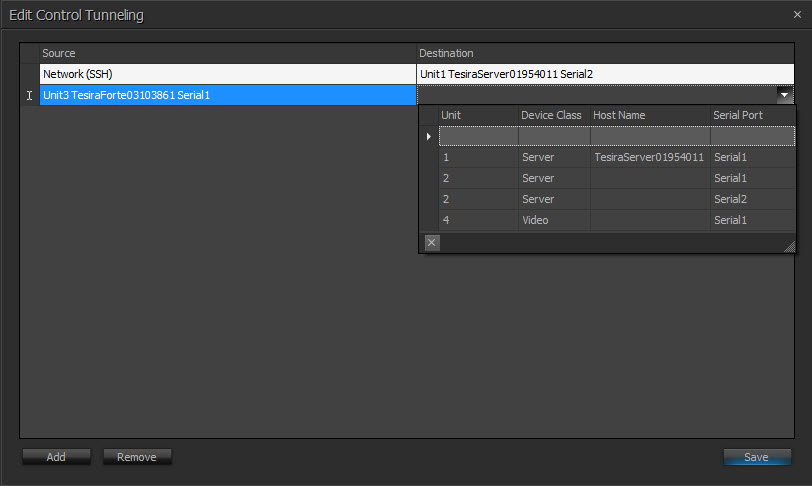
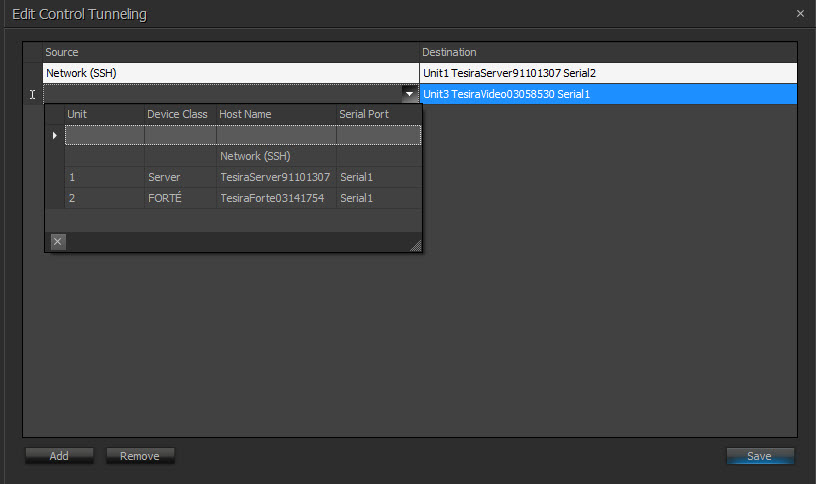
A Control Tunnel is a one-to-one assignment within the same Tesira system. If changes are made to the equipment table that affect existing control tunnels, Tesira software will give an error message:

User Authentication
Each SSH-toSerial tunnel supports one active user session at a time. The 3rd-party controller initiating the SSH session will be required to authenticate with the following credentials:
- Serial port 1:
- Username: serial_control_1
- Password: (none)
- Serial port 2:
- Username: serial_control_2
- Password: (none)
When the Tesira system is configured, the respective serial ports must be manually configured for Control Tunneling with the appropriate baud rate usage in Device Maintenance>Port Settings.
The baud rate configuration will be dictated by the controlled device and the 3rd-party controller and should match on each end of the control tunnel. Once set, rebooting the Tesira device(s) is recommended.
Other Considerations
If a control tunnel is active and the user causes a disruption (such as a change to a device IP address or serial port settings, reboot, etc.) the tunnel will 'break' temporarily. The system is designed to recover from this situation but could take upwards of several minutes to do so. There will be active faults associated with control tunneling during this period which will clear if the tunnel recovers successfully.